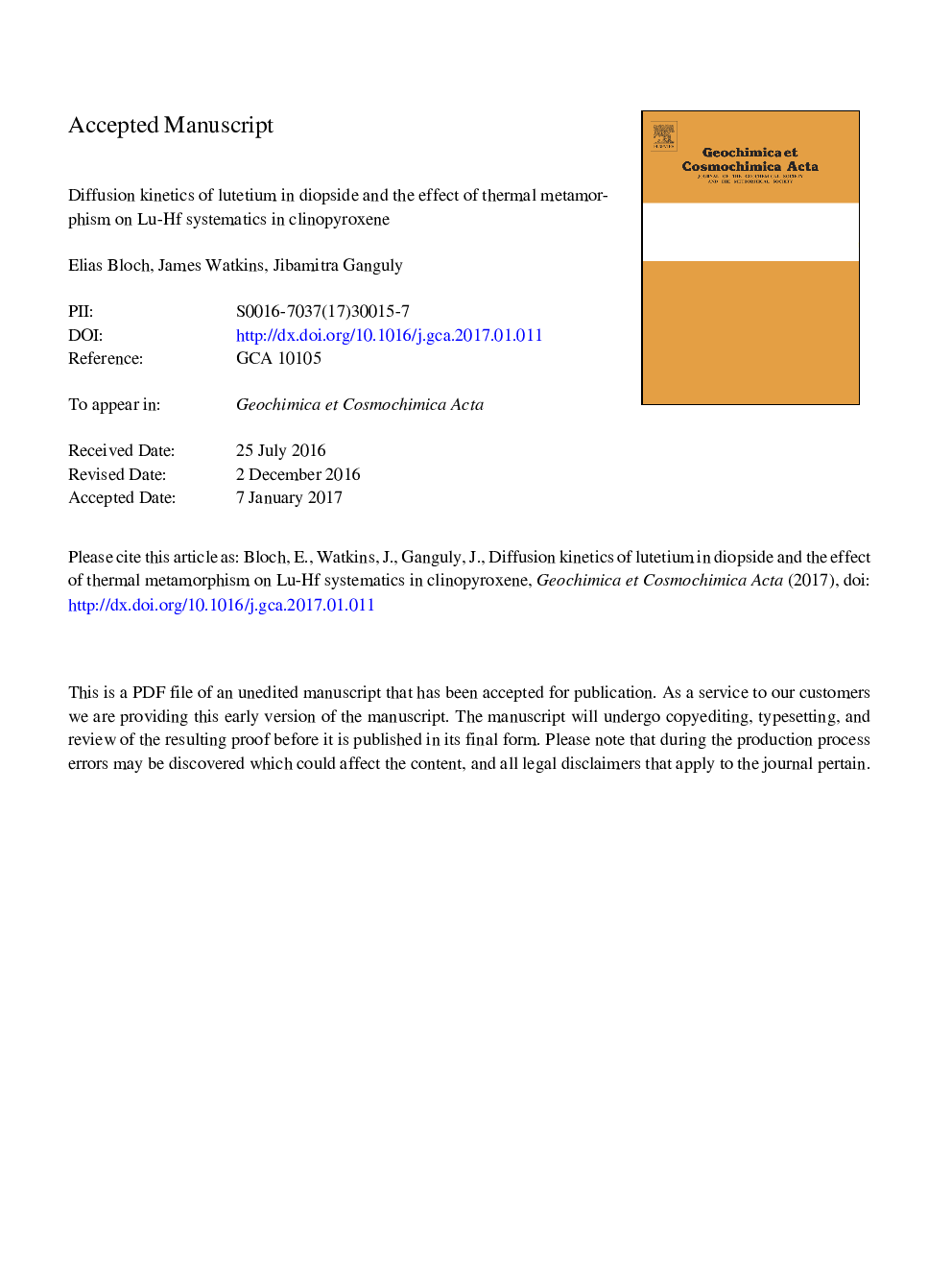| Article ID | Journal | Published Year | Pages | File Type |
|---|---|---|---|---|
| 5783537 | Geochimica et Cosmochimica Acta | 2017 | 66 Pages |
Abstract
We report new experimental data for Lu diffusion in diopside from 1150 to 1250 °C at 1 bar pressure and oxygen fugacity corresponding to the iron-wüstite buffer. The primary experimental dataset defines the following Arrhenius relation for Lu diffusion parallel to the b-crystallographic axis: DLu//b=1.37(±1.2)Ã10-13exp[208.7(±15.2)kJ mol-1/RT]m2/s,where T is in kelvin. We find that Lu diffusion in diopside is significantly faster than that of Hf, which could lead to spurious Lu-Hf ages via decoupling of 176Lu from 176Hf if the system was subjected to protracted periods of high temperature. The extent to which Lu-Hf ages are compromised during initial cooling depends on the peak temperature, grain size, cooling rate and the nature of Lu partitioning between clinopyroxene and its surrounding phase(s); however, in geologically realistic scenarios the effects of diffusion on Lu-Hf ages during initial cooling do not produce Lu-Hf ages that differ from the age corresponding to the closure temperature of Hf by more than a few million years. Lu-Hf systematics in clinopyroxene are far more susceptible to diffusion during reheating events that occur after radiogenic 176Hf has already accumulated in the host phase. For a given thermal pulse, the Lu-Hf age varies as a function of grain size, temperature, the timing and duration of reheating and the partitioning of Lu between clinopyroxene and its surrounding phase(s). The data collected and numerical model developed in this study have been used to simulate the effect of thermal metamorphism on the internal Lu-Hf systematics of the eucrites Millbillillie and Piplia Kalan. Although our model results do not offer a comprehensive solution to the apparent pre-solar Lu-Hf ages observed in many ancient meteorites, we argue that the â¼4.9 Ga pyroxene-whole-rock Lu-Hf ages of these specific samples are at least partially, if not primarily, due to diffusive loss of Lu from the constituent minerals to a partial melt phase during high-temperature metamorphism.
Related Topics
Physical Sciences and Engineering
Earth and Planetary Sciences
Geochemistry and Petrology
Authors
Elias Bloch, James Watkins, Jibamitra Ganguly,
